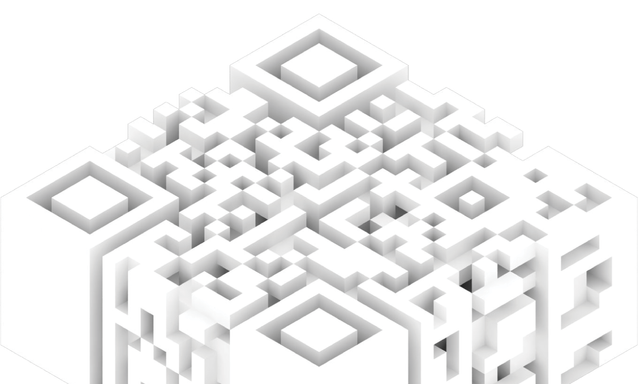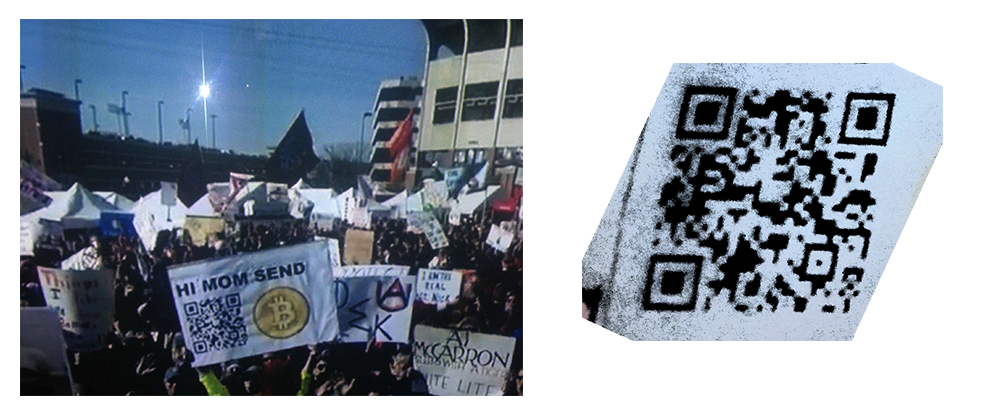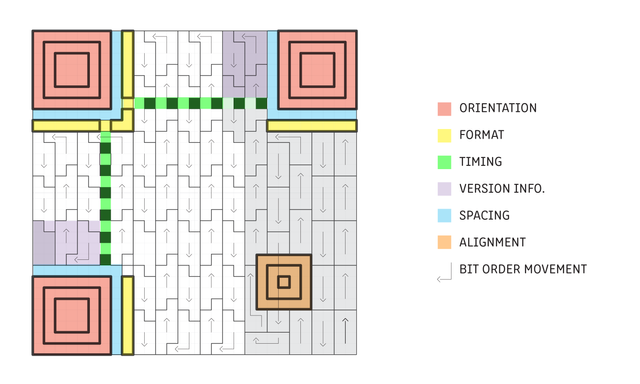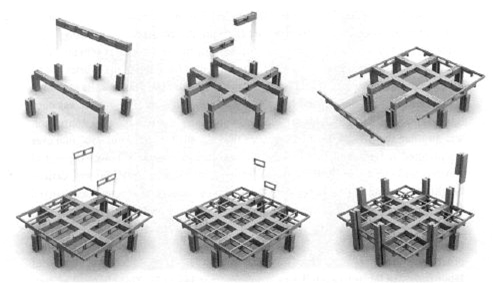Visual Language of Cryptocurrency : Anatomy of the QR Code

A Visible Cue to an Invisible World
Blockchain is the powerful, yet invisible puppeteer behind cryptocurrency. Digital coins and tokens zip around the world every second of every day. Due to the nature of this online ecosystem there is no jangling of loose change in pockets. No leather wallets. There are no brick and mortar banks either. Physical cues are hard to come by!
But with all of this invisible infrastructure, Bitcoin (in particular) has gained a surprising visual cheerleader. The QR code.
The Rise of Quick Response
A QR (or Quick Response) code is a type of identifier first invented to keep track of car parts during the automotive manufacturing process. This 2-D pattern is legible through digital camera devices.
Beyond the automotive industry of the mid 1990’s - the QR has found an unexpected home In the world of Bitcoin. The black and white QR has become a default method for sharing account (or “wallet”) addresses. With Bitcoin, each square black and white puzzle provides a link to a secure wallet account. The pixelated pattern is easily generated, sharable and customizable. Today, these patterns hop between cryptocurrency holders as a secure way of exchanging funds. Over the last decade, the QR has become a billboard of the visual language that defines Bitcoin and crypto-currency culture.

- The famous “HI MOM SEND BTC” sign from ESPN. This crypto-savvy college football fan collected over 22.4 Bitcoin from donations all over the world back in 2013. Learn more about the event, here.

Anatomy of a QR Code
The black and white squares are composed in an language of puzzle-units that are read by a camera in a very specific order. To make sense of this seemingly random grid, there are 3 orientation points at 3 corners of the code, with 1 alignment point that helps the camera keep track as it navigates the landscape of data. There is a start point, end point and indicators that tell the reader what kind of address it is being forwarded to.

- This is a rendering I composed for an early concept sketch of STEEM Park. The plan for the furniture and planters is actually a map of a QR code.
A Fabric for Programming Public Space?
This QR pattern-work is a kind of programmable fabric. Maybe even a map? If you look down on it, all of the different hierarchies begin to look a lot like roadways, buildings, skyscrapers and ultimately cities. So what if the language of sharing digital currencies translated to the built world around us? What might that look like?
As an designer, I’m curious about how this language can translate into something artful, architectural or maybe even into something resembling a city.

Wouldn’t it be interesting to reimagine this pattern work into something physical? Maybe even inhabitable or modular architecture? What do you think Steemit?

This is really cool! It's interesting to think about the density and organization of 2d items based on informational structure.
As far as translating it to 3d, I don't really see the connection. I think an artistic or sculptural approach is interesting from a more experimental perspective because you can see what kinds of form is could generate. However, I think that doesn't really extract the actual genius and meaning of the organization of the code itself and translate it into a useful 3d purpose.
Maybe someone can come up with an amazing way to organize buildings, or landscape elements to have a deeper, more intentionally strategic connection to each other, but I think it's a stretch to search for how the QR code structure could guide that. I guess it all comes down to how much does the organization and relationships of the code relate to potential 3d real adaptations of that strategy.
Flipping this idea around may have more meaning if you could essentially create the code for something (whatever that means) based on its form and organization, like the identity of a city. Kind of like a digital thumbprint. I think my brain might explode.
The images were really nice in the post @voronoi! And a nice thought. Architecture inspired by code. What about a collection of structures or buildings, maybe even fields, which viewed from directly above, create a code, viewed from a plane or from space?!
Anyone know if there are 3d QR codes (like your header image but real ones), which give different results with perspective? That'd be interesting...
I like where this is going. A 3D QR (on the city scale) could relay one type of information from above and a totally different one from ground level, as an elevation. There's a lot of play that can happen there.
Thanks for the insightful comment @sammarkjames :)
Yeah for sure, and it's scaleable too - hence my question if anyone has invented something like this yet? I've noticed these perspective drawings where you see different images from different angles, so it must work with a QR code/someone must have done it! If not then...I'll errrr, be right back...in a few weeks :P (I won't really, I'm not clever enough to create this).
Another thought. Your graphic reminds me of the structure of Louis Kahn's Richards Medical building at UPenn. Way ahead of it's time!
Ah I hadn't thought of that! There are some eerie similarities here... !
@voronoi Simple and strong concept. Love the first 3D image
Thanks so much @splus! That first image took some time to model properly ;)
@voronoi I expect so. Which software did you use? was it algorithmic modelling?
Just painstaking / old fashioned Rhino.
Imagine a series of functioning, giant-sized QR codes embedded in the landscape and visible from airplanes or satellites. Or medium-sized QR codes on facades of buildings visible on Google Street View... A community asset that spawns assets for communities. Could that work? What else could it accomplish?
A community asset that spawns assets. Super interesting! It could be modular... what if QR's (or something similar) could be placeholder facades? Once a threshold of funding or "interest" is met, something is build / added / plugged in.
Oh, large-scale urban placeholders with QRs is a neat idea. But I worry it could get out of hand with the aggressive commercial sector. Especially if it took off...
it was really a good article to read and more interestingly more valuable to me so much to learn about the QR Code and in depth details thanks for that :)
Congratulations @voronoi! You have completed some achievement on Steemit and have been rewarded with new badge(s) :
Click on any badge to view your own Board of Honor on SteemitBoard.
For more information about SteemitBoard, click here
If you no longer want to receive notifications, reply to this comment with the word
STOPThanks for making something so abstract a bit more understandable and even interesting from a design point of view. Resteemed!